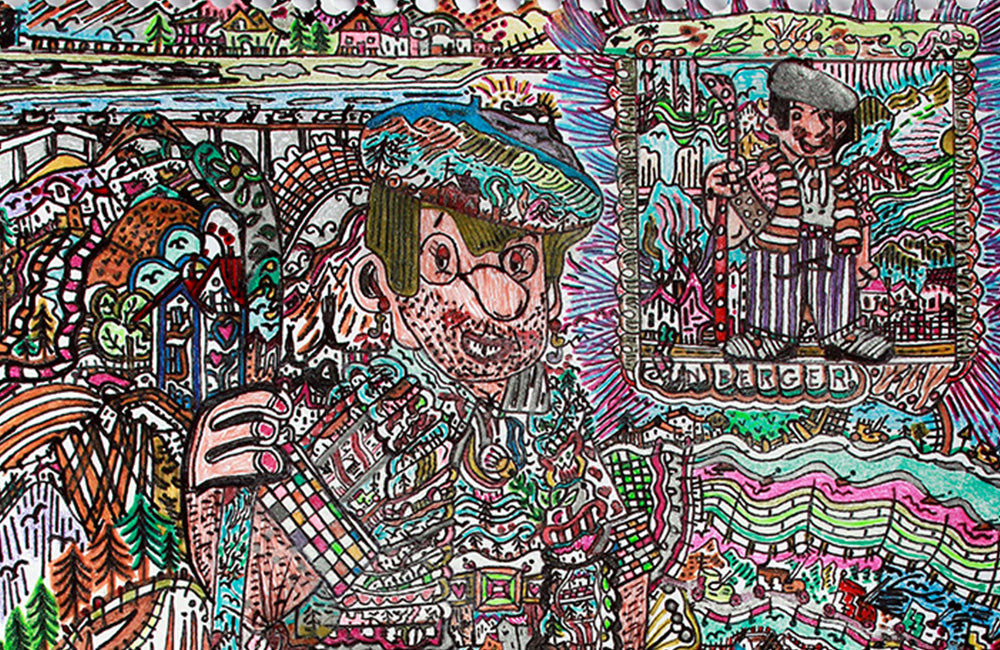First published: Summer 2020
The intricate line drawings of Swiss artist Monique Mercerat explore imaginary worlds, with elements from her childhood and TV programmes
It’s eleven o’clock at night. Kneeling on her ergonomic chair, a felt-tip pen in hand, Monique Mercerat (b. 1944) is drawing at her table. You could mistake her for an architect designing an urban project. “It has to be fine and well-constructed,” she says.
 Château l’Escalier, c. 2010, 15.5 x 11.5 in. / 39.5 x 29.5 cm, black and/or colour felt pens on paper
Château l’Escalier, c. 2010, 15.5 x 11.5 in. / 39.5 x 29.5 cm, black and/or colour felt pens on paper
Mercerat, 75, has been living at the Aigues-Vertes Residence – a facility for people with disabilities, near Geneva – for seven years. Her room is also her studio. With its assembly of dolls in crochet dresses, teddy bears and knick-knacks, the room has the air of a child’s nursery, a reassuring atmosphere which takes the edge off the vicissitudes of life. Mercerat’s childhood was marred by disability, pain, hospitalisation and social exclusion, due to a malformation of her digestive system and its harrowing consequences.
The artist rarely speaks of her early years with her family in the happy times spent with her two sisters and numerous cousins. Her day-to-day reality was unavoidably hard however and, from a young age, Mercerat looked for ways to escape. Perhaps inspired by two painter uncles, she assembled her troops of crayons, felt tips, paper, fabric and thread, and – in a small room behind her mother’s haberdashery shop – spent her days creating and bringing her personal universe to life. For as long Tavannes valley, in the Jura region, but one incident seems to sum up her upbringing – when, one day, she tripped and fell on to some hot tar on the road, she was swiftly pulled to safety by her mother. Her parents fought to ensure that, despite her problems, her life was as harmonious as possible, and Mercerat recalls as anyone could remember, she had drawn, knitted, crocheted and constructed, and gradually, the she says. “I didn’t know what else to do with it”. cupboards began to overflow with her work. None of these creations exist today: “I threw a lot of it away,” she says. "I didn't know what else to do with it".
This is an article extract; read the full article in Raw Vision #106




